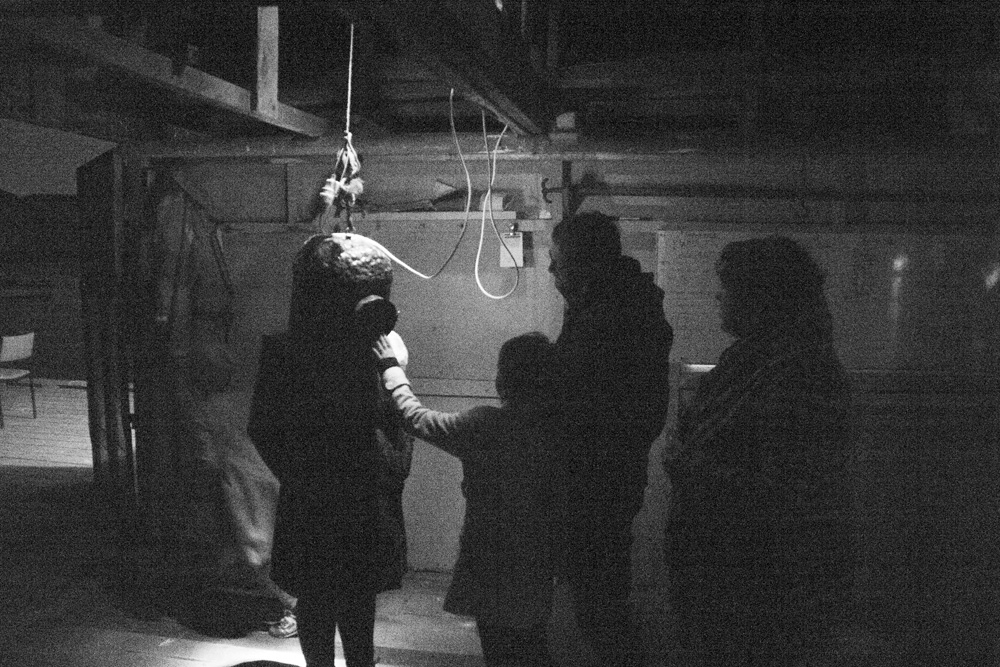Ted Whitaker
Videodrome is a work made up of physical and digital elements. The object references the structure of a vintage diving helmet, as a weighted metal object it descends from a Vogel Street Penthouse, actioned on request via a pair of retro walkie talkies. When the helmet reaches street level, viewers are invited to adorn the helmet. With Augmented Reality technology (AR), this work creates an abrupt experience between user and device, the virtual and the physical. When the viewer wears the helmet, what would conventionally be a glass window, instead is a smart phone screen. The virtual screen presents a live camera point-of-view of the participant, layered over this live camera view is virtual content. This virtual content moves with the camera creating a dual perspective, one of real-time Vogel Street with the second, a surreal imagining of another time. The augmented component of this work places the viewer in the centre of a virtual sphere, able to navigate a virtual Vogel Street made up from a digital collage of past, present and fiction.
Dunedin’s Vogel Street has a transformed geographical history as a site of re-claimed urban streets previously submerged by water, Videodrome links this to the metaphor of exploration. The idea of being submerged, immersed or all-surrounding speaks to physical isolation and sense of being removed, a typical occurrence while operating a mobile device. Videodrome, (2013) uses AR seemingly still in its primitive and an awkward stages. Although AR encompasses the umbrella as new media, this work embraces interruptions of a new and developing technology by interactions with electronic devices.
Videodrome was first shown at Waterlines II, a site specific installation at Back Beach, Port Chalmers, curated by The Anteroom Project Space.
Ted Whitaker graduated from the Dunedin School of Art with a BFA in 2010. He has exhibited works at the Blue Oyster, NONE, Glue Gallery, The Dunedin Fringe Festival and The Anteroom Project Space.







